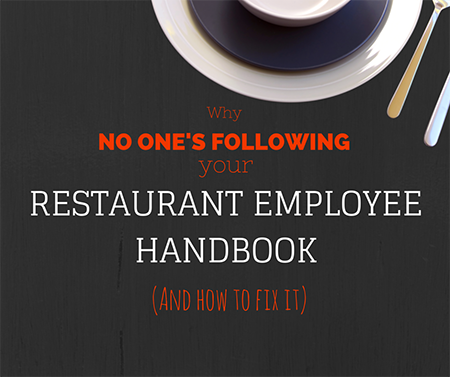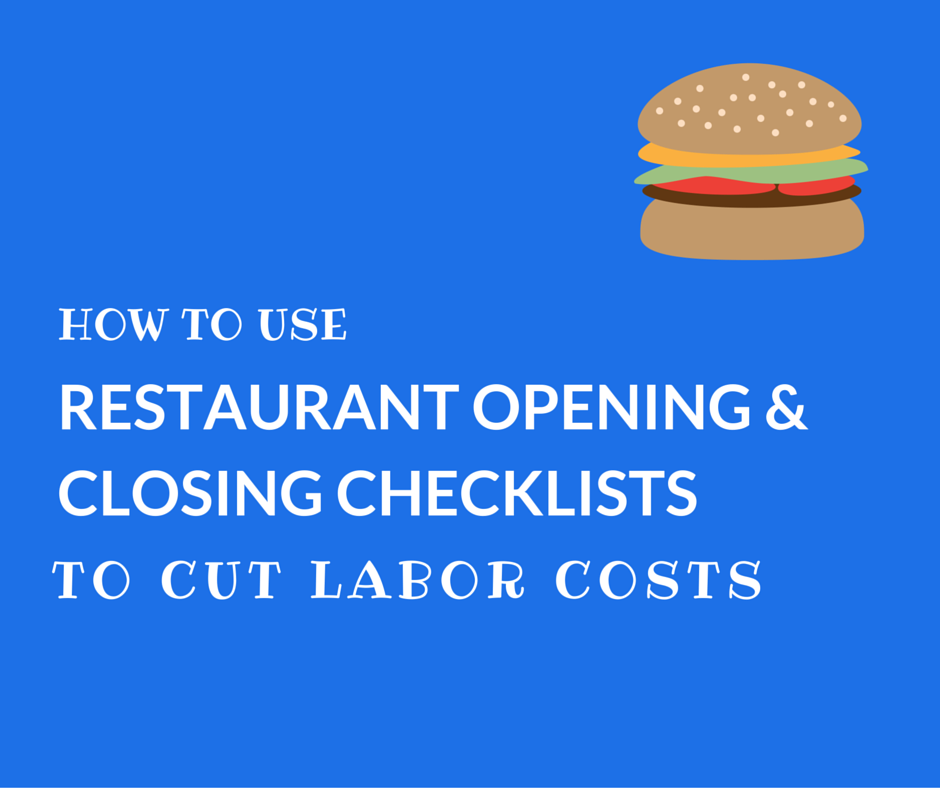Four Ways You Can Lower Restaurant Labor Costs
Regardless of theme, size, geographic location, or target clientele, all restaurants have one major concern in common: labor costs.
5 min read
Jodie Hewson February 06, 2015

Are you a restaurant manager that has spent hours crafting a detailed employee handbook? You’ve carefully outlined your ideal employee conduct and restaurant standards. Now you’re wondering, “How do I get my employees to start following this?”

It’s a problem every restaurant faces. No matter how detailed and comprehensive your employee handbook is you have trouble getting staff to read it, let alone follow it.
Here are five common reasons your employees aren’t following your employee handbook and how to fix them.
Scenario:
You gave staff the restaurant handbook, instructed them to read it over the next few weeks, told them it was important and that was that. Your new employees took the handbook with the responsible intention of reading it later, then it got swept away along with gym clothes and coffee cups in the back of their car.
Tips for Avoiding
The problem with this scenario is that the handbook was positioned from the beginning as something for “your spare time”. This allows employees to mentally mark it as non-priority, where it’s tossed aside for priority items.
Scenario
You’ve built your handbook, interactively trained staff and left your handbooks out for constant reference. Still, reference to it tends to make employees’ eyes roll or glaze over. They don’t understand the value of your policies and assume the rules are there for “legal” or “corporate” reasons.
How to Avoid
Rules and standards annoy those who don’t understand the reason behind them. To avoid, do your best to ensure your employees understand what's driving your standards, before encouraging staff to follow them.
Scenario
Unfortunately, aside from being an avid handbook advocate, you also manage a restaurant. Rushes happen and you and your employees’ have to react. Sometimes training can fall through the cracks and bad habits form before you even get the chance to drive your points home.
How to Avoid
It’s impossible to avoid an unplanned rush - they’re unplanned. Instead of dropping training all together, look for ways to make training more efficient and an ongoing process.
Scenario
Your employees are exhausted after a hectic night. They forget to wipe down the bar and neglected their hourly bathroom checks. You don’t say anything. You know they were busy. Employees notice the lack of repercussions and subconsciously begin to cut more corners when it makes sense for them. Other employees see this happening without consequence and start following suit.
Tips for Avoiding
Finding the line between pointing out all employee mistakes, or pointing out no mistakes is a challenge for every manager. Instead look for ways to shift accountability for actions onto your employees, so you don’t have to point out every thing they do wrong. They'll know for themselves when they've missed something.
Learn more about how a restaurant checklist app can help your business.
Scenario
Sometimes its not your employees’ fault if standards can’t be met. Maybe they’re no more toilet paper left to restock your bathrooms, or your cleaning solution has run out. They aren’t able to complete a task and aren’t clear what to do to fix the issue for next time.
Tips for Avoiding
Empower employees notify you or other managers when something stands in way of them following your handbook or help them fix the issues themselves.
Getting your restaurant staff to adopt your employee handbook requires more than just creating a handbook. Look for ways to constantly reinforce and emphasize the importance of proper employee conduct and supporting restaurant standards both in your employee training and on an ongoing basis. Develop and utilize programs and leverage software and tools that empower employees to be accountable for their own actions and resolutions of problems that prevent them from completing standards.

Regardless of theme, size, geographic location, or target clientele, all restaurants have one major concern in common: labor costs.

Whether you’re managing a single restaurant or thousands, balancing the cost of your staff is one of the most important variables affecting both your...

One of the most significant, yet essential costs restaurant managers face are labor costs. Luckily, with efficient processes and well-trained staff...